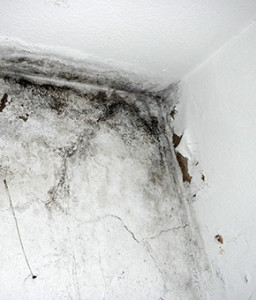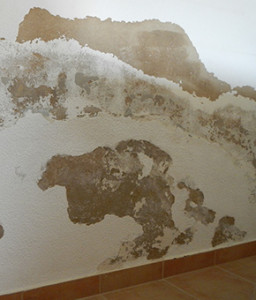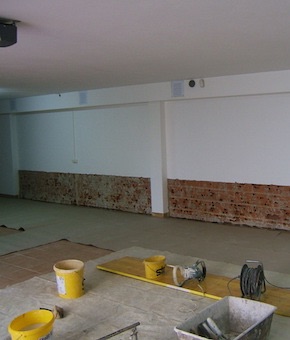Dampness in buildings | RenoBuild Algarve



Dampness Issues Repair
The action of dampness in the interior of houses is responsible for the development of a huge variety of anomalies, with consequent deterioration to buildings (coatings, plastering and paints). The main causes for the appearance of dampness within walls, floors and ceilings are mainly due to mistakes during the design and construction of a building, along with its poor maintenance. The excess of moisture creates conditions for the development of bacterias (moulds, algae, fungi, etc) that are harmful to our health.
TYPES OF DAMPNESS
Dampness may manifest itself in several forms, notably:
- Moisture generated during construction: resulting from the need to use de water in the production of some building materials (e.g. concrete and mortars);
- Penetrating Dampness: arising from atmospheric precipitation, mainly when joined by wind. An occasional deficiency in a terrace or wall (cracks) is enough for this type of humidity to occur;
- Condensation: determined by superficial and interstitial condensation phenomena and connected with the presence of “cold” surfaces and the diffusion of vapour through the wall. In zones where the superficial temperature is lower (thermal bridges, glazing…), and in places with scarce ventilation and limited air circulation (closets, room corners, etc.) water vapour may condensate. The occurrence of condensation depends on the use conditions of spaces, ventilation of compartments, thermal insulation characteristics of the surroundings, existence of thermal bridges and interior ambient temperature. The resultant water drops (or condensation) may then soak into the wallpaper or paintwork or even plasterwork and attract black mould to grow on its surface;
- Rising Damp / Saltpetre: capillary ascension is a natural and very frequent phenomenon on the walls of houses. This is caused by water from the ground rising into the home by penetrating or bypassing a defective damp proof course and the porosity that materials generally have. The humidity existing in the soil ascends through walls due to the phenomenon of capillarity, ultimately coming to the surface, causing saltpetre stains and a degradation of coatings;
- Humidity due to fortuitous situations: it is caused by accident, failures of equipment and/or lack of maintenance (e.g.: burst pipe or gutter, broken tiles, broken glasses or failure in sealing them, etc.).
DAMPNESS TREATMENT
When solving problems caused by dampness, RenoBuild pays special attention to diagnosis and survey of pathologies, to enable the choice of the most efficient and least intrusive repair method.
In addition to solutions that will protect the construction from the effect of water action (Eg.: thermal insulation solutions; cracking repair systems; waterproofing systems), RenoBuild provides solutions to solve the problems caused by dampness, namely by applying renovating plaster, by removing moulds, etc, to return the adequate sanitation conditions to the construction elements.
Some moisture in the air is vital to our well-being. About 40%-60% relative humidity is the recommended household level but when the level reaches 70%-80% then condensation is likely to be the result. By reducing the amount of condensation in your home you will reduce the amount of black mould growth and house dust mites, thereby improving your living environment and, reducing your heating costs.
Moulds
Moulds are originated filament fungus colonies that live as parasites provided that there are organic materials and favourable humidity conditions. They look unpleasant and are dark coloured, usually greenish. Surface higher humidity content can originate mould in colder and less ventilated areas of a house. Simultaneously, when it occurs there is frequently a typical odour.
Exposure to excessive humidity and mouldy environments increases health risks. Moulds can cause nasal obstruction, throat irritation, cough, eye, skin and airway irritation, and sometimes, allergies. Mould can pose as an increased risk for people with impaired immunity or people with certain diseases.
Problems with coatings and masonry walls
Efflorescence (superficial) and cryptoflorescence (masonry interior) arise from the simultaneous presence of humidity and water soluble salts. Subsequently, when water evaporates, these salts crystallize. Such phenomenon leads to a significant volume increase which causes coating blistering and its gradual deterioration.
Parasitic Plants
Parasitic plants development in several construction elements arises from the existence of permanent humidity. These plants appear as a consequence of permanent humidity and dust accumulation and deposition of seeds brought by the wind as these are the ideal conditions for its propagation. Draining deficiency, cracking, material detachment and disaggregation and maintenance absence are some of the most significant causes for the occurrence such plants.
Dampness in buildings | RenoBuild Algarve
Algarve: Portimão • Lagos • Lagoa • Carvoeiro • Aljezur • Sagres • Monchique • Silves • Albufeira